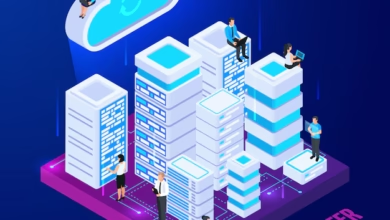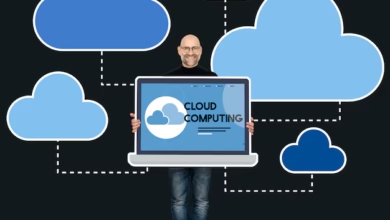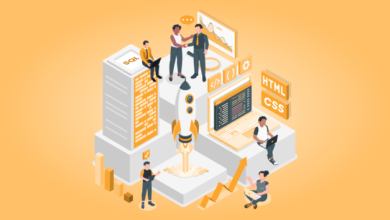Asset Tokenization vs Traditional Securities: What Investors Need to Know
Imagine owning a fraction of the Empire State Building or a Picasso painting, all without ever setting foot inside an auction house or dealing with complicated paperwork. Welcome to the future of investing through asset tokenization, a process that’s revolutionizing the way assets are bought, sold, and traded. In this blog, we’ll explore the crucial differences between asset tokenization and traditional securities, and what investors need to know to stay ahead in this evolving market.
In recent years, the rise of blockchain technology has given birth to numerous innovations, one of which is asset tokenization. Asset tokenization platform development is enabling businesses and investors to convert real-world assets into digital tokens on a blockchain. This trend isn’t just reshaping finance but also redefining ownership and access to investment opportunities.
Understanding Asset Tokenization
Asset tokenization is the process of creating digital tokens that represent ownership or a stake in real-world assets, such as real estate, commodities, art, or even intellectual property. These tokens are secured on blockchain networks, ensuring transparency, immutability, and ease of transfer.
Key Features of Asset Tokenization:
- Fractional Ownership: Enables investors to own a portion of high-value assets.
- Enhanced Liquidity: Tokens can be traded on secondary markets, increasing the liquidity of traditionally illiquid assets.
- Reduced Transaction Costs: Smart contracts automate processes, cutting down intermediary costs.
- Transparency and Security: Blockchain records are immutable, providing a transparent and secure ledger.
Traditional Securities: A Quick Overview
Traditional securities include stocks, bonds, mutual funds, and other financial instruments that represent ownership or debt obligations. These securities are regulated by government bodies like the SEC in the United States and involve a well-established system of brokers, exchanges, and custodians.
Key Features of Traditional Securities:
- Regulation and Oversight: Heavily regulated to ensure investor protection.
- Market Infrastructure: Established trading platforms and legal frameworks.
- Familiarity: Well-understood by investors and financial institutions.
- Access: Often limited to accredited investors, especially for private equity and venture capital.
Asset Tokenization vs Traditional Securities: The Key Differences
| Criteria | Asset Tokenization | Traditional Securities |
| Ownership Model | Fractional ownership through tokens | Full or fractional shares/bonds |
| Liquidity | Higher, via 24/7 trading on digital platforms | Limited to market hours and liquidity constraints |
| Transparency | Blockchain-based, immutable records | Dependent on financial disclosures |
| Access to Assets | Broader access, even to retail investors | Often limited to accredited investors |
| Intermediaries | Reduced intermediaries through smart contracts | Requires brokers, custodians, etc. |
| Costs | Lower due to automation | Higher due to intermediaries |
| Settlement Time | Near-instantaneous | Typically T+2 or longer |
Why Investors Are Turning to Asset Tokenization
- Broader Market Access: Asset tokenization democratizes investing by allowing a wider pool of investors to access assets like real estate, private equity, or fine art.
- Portfolio Diversification: Tokenized assets enable diversification across different sectors and asset classes.
- Improved Liquidity: Unlike traditional securities, which may lock up capital, tokenized assets can be traded more freely.
- Greater Transparency: Blockchain ensures that all transactions are recorded immutably, providing better transparency compared to traditional systems.
Asset Tokenization Platform Development: The Backbone of Innovation
Developing an asset tokenization platform is pivotal for businesses looking to capitalize on this trend. An asset tokenization platform development involves creating a secure, scalable, and regulatory-compliant system where assets can be tokenized, traded, and managed efficiently.
Key components include:
- Blockchain Integration: For transparency and immutability.
- Smart Contracts: For automating ownership transfers and dividend payments.
- Regulatory Compliance: Ensuring that token issuance complies with jurisdictional laws.
- User Interface: Intuitive dashboards for investors and asset owners.
Popular Industries Leveraging Asset Tokenization:
- Real Estate: Properties can be divided into tokens, allowing small investors to participate.
- Commodities: Gold, oil, and other commodities are increasingly being tokenized.
- Art and Collectibles: High-value art pieces can be owned fractionally.
- Private Equity: Making venture capital and private investments more accessible.
Asset Tokenization Platform Development Cost
The cost of developing an asset tokenization platform can vary significantly based on features, security measures, and regulatory compliance. Here is a rough breakdown:
- Basic Platform: $50,000 to $80,000
- Medium Complexity: $80,000 to $150,000
- Advanced Platform with Custom Features: $150,000 to $300,000+
Factors impacting the cost:
- Blockchain Protocol Selection: Ethereum, Polygon, etc.
- Smart Contract Complexity: Automated dividend payments, voting rights, etc.
- Security Measures: Encryption, multi-factor authentication.
- Regulatory Compliance Modules: KYC/AML integration.
Risks and Challenges in Asset Tokenization
While asset tokenization offers multiple benefits, it comes with its share of risks and challenges:
- Regulatory Uncertainty: Laws regarding tokenized assets are still evolving.
- Market Adoption: Widespread acceptance is still a work in progress.
- Technological Barriers: Blockchain scalability and security remain concerns.
- Valuation Difficulties: Determining the accurate value of tokenized assets can be complex.
Real Estate Tokenization Development: A Growing Trend
Real estate remains one of the most promising sectors for tokenization. Real estate tokenization development enables property owners to fractionalize ownership, thereby increasing liquidity in a traditionally illiquid market.
Benefits of real estate tokenization:
- Access to Global Investors: Expands the investor pool beyond geographical limitations.
- Fractional Ownership: Lowers the barrier to entry for retail investors.
- Liquidity: Secondary markets provide avenues for buying and selling real estate tokens.
- Transparency: Blockchain ensures clear and immutable records of ownership and transactions.
Companies are investing heavily in real estate tokenization development, seeking to redefine property investment for the digital age.
Future of Investing: Hybrid Models
The future of investing may well lie in hybrid models that combine the strengths of both traditional securities and asset tokenization. Institutions are exploring tokenizing traditional financial instruments to enjoy enhanced liquidity and transparency while staying within regulatory frameworks.
Final Thoughts
Asset tokenization is transforming how we perceive ownership and investment. While traditional securities will continue to play a significant role, tokenized assets are opening new doors for retail and institutional investors alike. Understanding the nuances between these two investment forms is essential for anyone looking to diversify and future-proof their investment strategies.
If you’re an enterprise seeking to explore this exciting frontier, investing in asset tokenization platform development could be your first step towards innovation and financial democratization. Whether it’s real estate tokenization development or creating tokenized art platforms, the potential is immense.
By embracing these emerging technologies, businesses and investors can unlock unprecedented opportunities in the global financial ecosystem.




